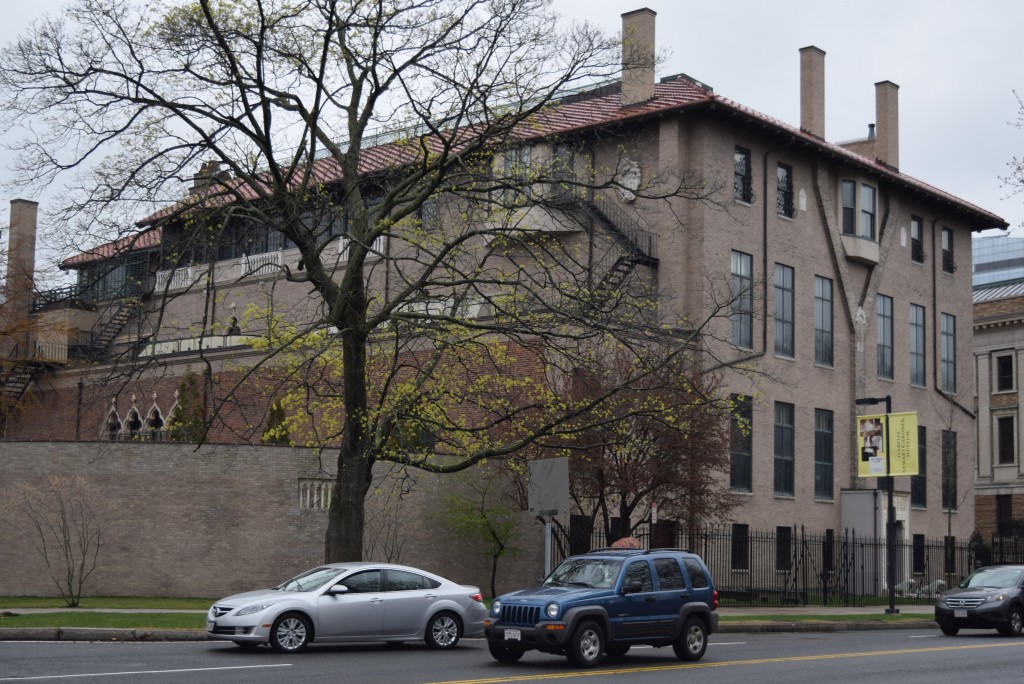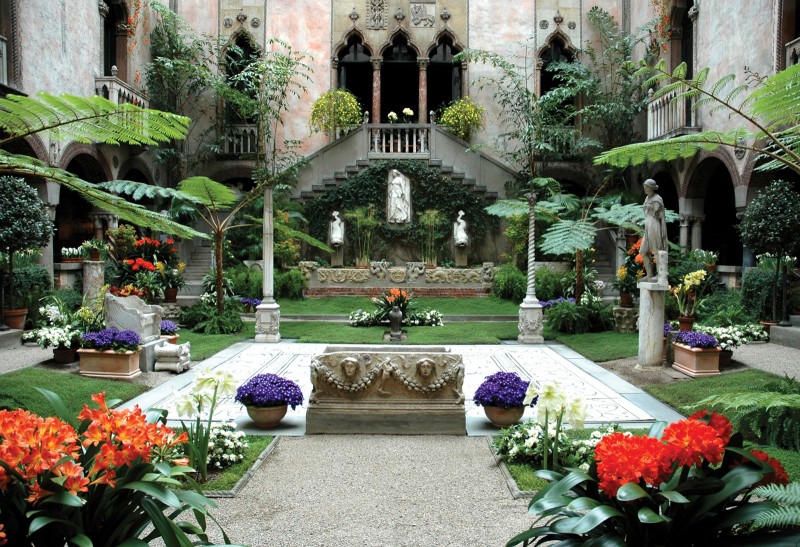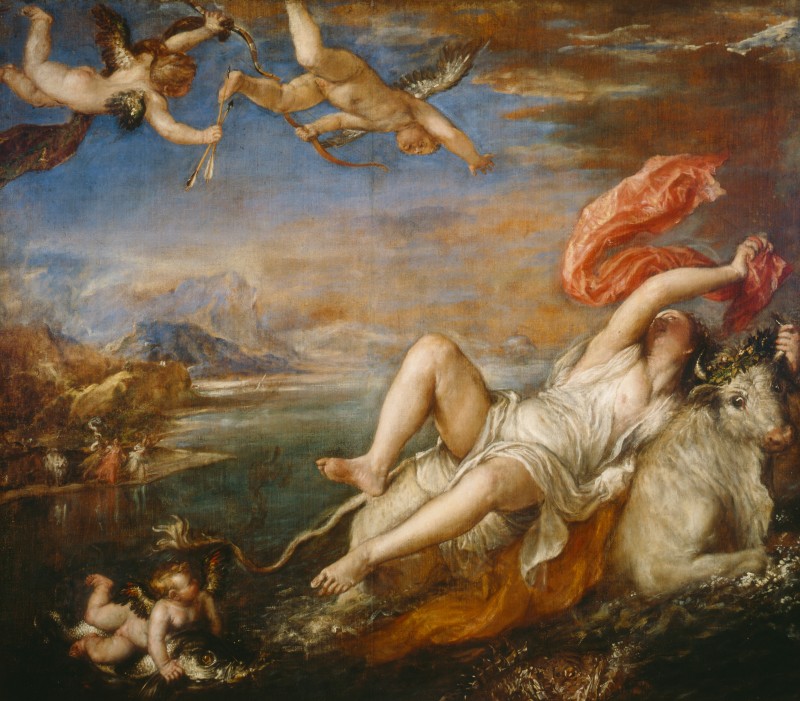
This spring husband Dave and I flew to Boston College for the christening of our newest grandchildren, Spencer and Finn. Before boarding Alaska Airlines’ red eye to Seattle, our usual panic ensued: pets to Rabbit Creek Kennels, stop the flow of office emails. Finally sinking into our plane seats Dave and I realized we’d forgotten all the wiring to the computer, phones and camera.
Locating a Best Buy in a former Sears near Boston’s Fenway Park, we subway’d from Logan’s Hilton (a good choice for jet-lagged West coasters). I discovered Best Buy was near Winsor School where I had attended fifth and sixth grade. Returning to one’s olde stomping ground isn’t always easy. Backstory: I was asked to leave Winsor because I wasn’t deemed proper Bostonian material; I didn’t sing, couldn’t turn somersaults, and refused to read essays from a box while classmates enjoyed recess.
Apparently, the school displayed my art projects long after I got the heave-ho, which is where Sears comes in. Once, after school, I walked to the art deco Sears to buy burlap for a project about post-war commodification deriving from the cotton trade. I took a candy box, wrapped it in cotton batting and then the burlap. I banded my bail with painted rubber bands and glued the whole thing to poster board along with strings that pointed to magazine cut-outs of cotton manufactured goods. Climax: I was given a ‘C’ because the school decided I had bought my mini-bail while on vacation down South.
It was cloudy and damp as we sat in one of Boston College’s chapels. Outside was a large statue of over-zealous Thomas More complete with cape and bonnet, swinging his leather bound tomes as he watched over sleepy iPhone’d students snuggling while crossing the campus.
Father MacMillan, who presided at the christening, eliminated the ‘hell fire and brimstone’ most of us post-war babies endured in fifties’ Sunday schools. He donned a cassock over jeans, commenting his tippet came from missionary work in Mexico. Father Donald proceeded to baptize Spencer and Finn using what looked like a yuletide punch bowl. Toddler Spencer, who was adopted at birth after the death of infant Violet, squirmed as he was dipped into MacMillan’s temperature controlled water; Finn, seven months younger, smiled, oblivious to MacMillan’s musings about the two additions to the long litany of Catholic saints.
Down the street was where I had spent most of my grammar school years. After the christening, Dave and I drove to the Chestnut Hill School campus, a former pre-Civil War church which I remembered smelled of wet brown paper towels; it was my life from kindergarten through grade four. My adult mind went into overdrive as I envisioned moms in pastel shirt-waist dresses parked in Country Squires and Ramblers where an outdoor pool now exists.
Large plywood climbing boxes resembling Donald Judd’s Minimalist sculptures used to be stacked on the unpaved play areas, now replaced by ‘politically correct’ climbing apparatus and artificial turf—no more gravel in knees. The fire escape to the attic where my third grade was held had vanished too. Under roof eaves used to be bundles of World War II Life and Paris Match magazines. Madame Marlow, the fifties principal, would show us pictures of the war-torn French countryside.
The shop teacher noticed Dave snapping pictures by the new glass entryway and invited us inside. I recognized a small warped stairway up to what was Miss Brown’s nurse’s office. She resembled the nosy housekeeper played by Mary Wickes in White Christmas.
Gone was the incessant tick of the Roman numeral’d clocks. The main room, originally used for church services, was now a library. When I attended, it was used for plays and the Christmas pageant. I foraged for firewood as the father in a Hansel and Gretel production, and once carried an oriental rug and silver tea pot down the aisle to a makeshift crèche.
Fourth grade was down the hall, but rearranged walls confused my recollections. Dingy yellows and browns, colors of the old chapel, had been replaced with bright lighting and bulletin boards with colorful messaging looming everywhere. I looked for the plaque reading ‘Marshall’s room.’ He was a kindergartener who was killed in a Christmas auto accident. Marshall would be over sixty if there had been child safety restraints.
Once I drank a coke pretending to be on safari, in the outdoor spring play; another year I wore a yellow sarong complete with spear as King Kamehameha. The last time I’d been at Chestnut Hill was 1960, for their hundredth anniversary. My mother was PTA chair and served the novelty take-out spaghetti dinners. I was introduced to Senator Saltonstall who seemed old. That was over fifty years ago and I had finally caught up to him age-wise.
Our shop teacher/guide thought me negative; as I rambled about throwing up in the kindergarten sandbox and ranted about the meagre curriculum awarded to female baby boomers. Boys left Chestnut Hill after first grade for nearby Dexter and a curriculum designed to turn them into lawyers and doctors and not just Betty Crocker or Donna Reed.
We a few streets over to Beaver Country Day where I was schooled from seventh to twelfth grade. I envisioned my father picking me up after a seventh grade square dance; the turntable of Miss Baker’s stereo continues to mentally rotate. Tennis courts, now a parking lot, reflect increased teen driving as moms now work. We came upon headmaster Peter Hutton, who invited us inside to where post-war Armstrong linoleum had been replaced by oak flooring.
The hallway closets with their pinchy doors had morphed into open nooks for quiet contemplation. Dave found my name on a class plaque–I always felt like one of the forgotten ‘B’ students. Down a corridor, the dining room appeared to have a salad bar. My children laugh when I regale lining up for farm style lunches and saying daily grace; once they lined us up for polio shots. Mrs. Perry’s sewing room was now a non-descript classroom; I had loved to sew and cut-up my father’s old mainsail as a dress for the spring fashion show.
Dave and I climbed the three flights to the art studio. It was comforting; the stairwells still had the feel of nineteenth century early education and resembled South Chicago’s Ray Elementary which my daughter, Maddy, had attended when I did graduate work at the University of Chicago. Happily, Beaver’s art studio hadn’t been remodeled; the lighting still came from sky lights and the floors had encrusted paint from generations of creativity. I was introduced to acrylic paint and Janson’s art history. Dave thought my Alaskan studio had essence of Beaver’s attic.
Absence and renewal would continue for me at the Isabella Stewart Gardner Museum in Boston’s Fenway. New Yorker Gardner married into New England’s aristocracy and burst ‘proper Bostonian’ corsetry by skirting their mores. She hosted bohemian parties often inviting Irish guests, thus defying Yankee bigotry.

Gardner knew Whistler and Sargent and cheered for the Red Sox. Her Italian Palazzo in the Fenway, now open to visitors, has small rooms crammed with paintings and artifacts, surrounding the first American glass covered courtyard, adorned with plants and bits of Greek/Roman statuary. Friend Henry James displayed ambivalence towards wealthy Americans who scoured Europe for art treasures, and felt Gardner overly obsessed with collecting.
Gardner museum goers should embrace the aesthetic experience in its entirety. True, artworks by Whistler and Sargent are jumbled, lighting is poor, and identification tags don’t happen. It’s easy to back into choir stalls and free standing candelabra. Gardner was a devout Episcopalian and installed a personal chapel. She donated the high altar for Boston’s Church of the Advent where she allegedly did penance by washing the front steps.
Visitors can always cross the street to Boston’s Museum of Fine Arts and see better displayed examples of her artists. But the Gardner is unique because its overstuffed Victorian rooms merge with its overall Grand Canal splendor and continuing presence of Isabella Stewart Gardner.

Gardner stipulated that her art collection not be altered which poses problems for curators dealing with high costs of insuring art while enticing twenty-first century museum-goers who want restaurants and gift shops. In 2012, a Renzo Piano addition was attached to Gardner’s palazzo. Dave and I selected Cape Cod fritters with green goddess dressing followed by chicken salad with apricots and pistachios from Café G in the addition. Tucked behind Gardner’s brick wall, hiding from Fenway traffic, diners have an opportunity to think about the gaiety and philanthropy Gardner bequeathed to stuffy Boston.
On St Patrick’s eve, 1990, the Gardner Museum was burgled by faux police who pilfered artwork worth millions. A curatorial decision to keep the vacant frames on display reminds the viewer of the unsolved crime and how art can empower even the selfish. It is ironic that the thieves did not take Gardner’s The Rape of Europa by Titian.
Information about the Isabella Stewart Gardner Museum is available online. The Art of Scandal by Douglas Shand-Tucci is available from Amazon.



